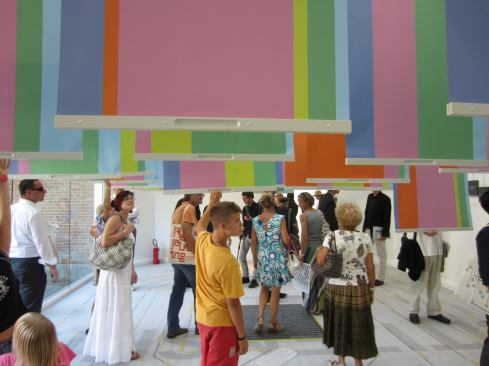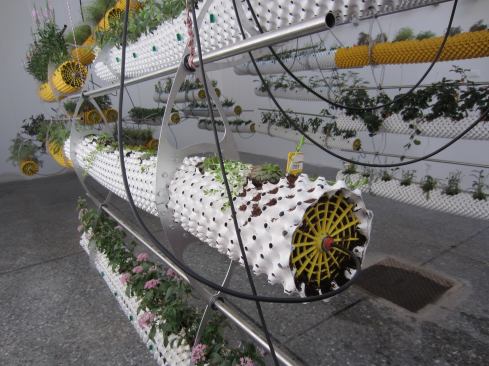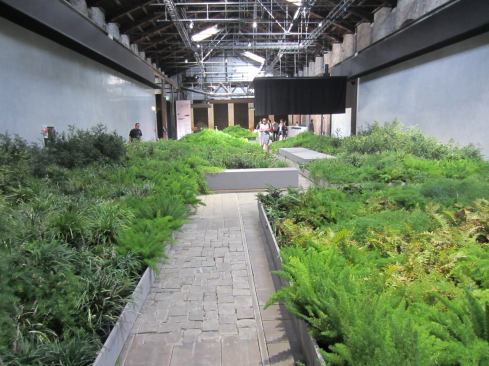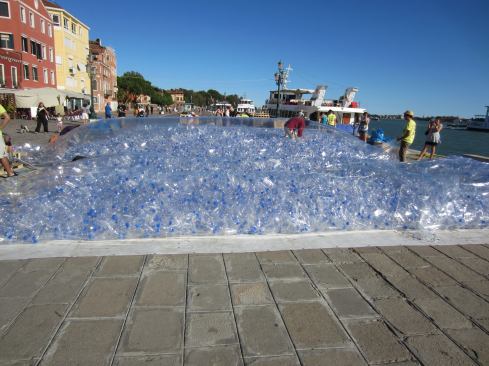Richard Ingersoll
The German Pavilion
In the end, very little at David Chipperfield, Hon. FAIA’s “Common Ground” biennale concerned the ground. I could think of thousands of projects, including many designed by the 65 invited architects, such as Herzog and de Meuron’s Caixa Foundation in Madrid, or Renzo Piano, Hon. FAIA’s addition to the Church at Ronchamp, that make exceptional modeling of the ground plane to stimulate public engagement. Instead these same architects were represented by very skyward works, the Hamburg Concert Hall and the London Shard, a structure that more than any other represents the uncommon 1%.
Only the small exhibition on the work of Korean architect Seung H-Sang showed projects that consistently exploited the terrain as a major factor in design. While the Biennale’s theme of “common” strives to remain beyond reproach for its good intentions, it has yielded few experimental or inspirational solutions. Only the neon-clad Venezuelan squatters café built to dramatize the occupation by hundreds of homeless families in the unfinished Caracas skyscraper Torre David, suggests a call to action. On the quai near the Arsenale (Riva degli Schiavoni) a group of international students, sponsored by a long-term squatters organization in Venice, created one of the most innovative and engaging works. They filled three nylon sacks, each about 10 yards long, with hundreds of empty plastic bottles, raising them into an ingenious series of translucent vaults by sucking the air out of the cases.
To find deeper commitment to the common, one must look to the national pavilions. The German revival of one of the first slogans of the ecology movement, “reduce, reuse, recycle” used gigantic photographs to illustrate how one could apply these notions to architecture, but despite the grandeur of the photographs, they left much to desire in terms of architectural beauty. The U.S. pavilion offered the most strident call to activism, including in its 124 featured projects many forms of guerrilla gardening, instantaneous refurnishing of public space, and occupying actions. The works are often self-built, anonymous, and rarely of long duration yet, considering the uncertain future for the design professions, they expressed the notion of stepping down from grand visions to a level where action was desperately needed. In the Spanish pavilion, which featured the work of five emerging offices, visitors find a room filled with novel planters made, using a new technique, from cylindrical metal containers that are punctured so that the roots of the plants do not get overly dense at the perimeter.
This year’s Italian pavilion, which is usually the most chaotic, is actually one of the most coherent. The first of its two long rooms is filled with a dense collection of potted ferns and other plants that grow in the underbrush of Italian forests, a lyrical and refreshing vision to prepare you for the second room—representing the “regreening” of the Italian economy—which combines a documentation of the patronage of Adriano Olivetti, some current examples of enlightened Italian industrialists, and a variety of projects and designs (including fixed bicycle pedals used to recharge one’s cellphones) that are indications of a shift toward a green economy. Such an approach provides a new ground for optimism.




